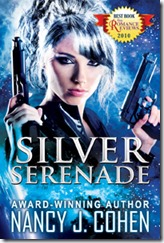While doing research for my books, I love to learn about esoteric topics. For Trimmed to Death, #15 in my Bad Hair Day Mystery series, I focused the story on food. Hairstylist and amateur sleuth Marla Vail enters a bake-off contest that’s a recipe for disaster when a contestant ends up dead.

In considering the possible crime involved, I came across the topic of olive oil fraud. This led me to delve into the Florida olive growing industry and how olives are processed. Yes, I’m an olive fan. And now I’m more aware of fraud in the olive oil import business. Read on, and you can become more knowledgeable, too. Disclaimer: This information is based on my interpretation of the data so you are urged to verify the facts yourself.
The Problem
Olive oil scams rake in millions of dollars and involve fake labels and inferior products. The Italian extra virgin olive oil you paid a hefty price to buy? It may originate from somewhere else entirely. For example, a criminal ring from Italy passed off a blend of imported oils from the Middle East as authentic Italian extra virgin olive oil (EVOO). Italy’s authorities unraveled the scheme, which involved twelve companies and a certification laboratory. Thousands of tons of olive oil were fraudulently bottled and labeled as made in Italy. Just so you know, Italy may be the world’s largest importer and exporter of olive oil, but Spain is the largest producer. Much of what comes from Italy is merely bottled there.
In another case, seven well-known Italian olive oil producers were investigated for falsely passing off inferior olive oil products as extra virgin. Italian authorities conducted operation “Mama Mia” and seized 2,000 tons of falsely labeled EVOO worth $14.5 million. Two months later, they seized another 22 tons of counterfeit oil. Italian newspaper La Stampa tested twenty of the most popular brands in Italy and discovered forty-five percent was falsely labeled.
As much as eighty percent of olive oil labeled as extra virgin may be diluted with lower grades of oil. These can include refined oils that have been processed with heat or chemicals. Or the EVOO may be adulterated with processed seed oils, such as soybean, peanut or sunflower. These seed oils can cause potential allergic reactions. Sometimes the extra virgin olive oil is cut with stale oil left over from earlier crops, or it may even be sold rancid. The market is rife with fraud, with estimates that nearly seventy percent of all store-bought EVOOs sold in the United States are falsely labeled.
What is being done about it?
The U.S. Congress ordered the FDA to begin testing imported oils for adulteration and misbranding. Italian producers have created their own seal of quality that says 100% Qualita Italiana. California producers have a California Olive Oil Commission (COOC) 100% Certified Extra Virgin seal. The North American Olive Oil Association has its own certified logo.
What can you do?
Check the label and see if the country of origin is listed. Look at the date for when the oil was pressed or harvested and try to buy it less than a year old. Ignore the “bottled on” date as well as “use by” a certain date. See if it has one of the certification seals above. Look for specialty olive oils produced by local olive growers in Florida and California. Shop at specialty stores that provide information about chemical analysis, olive variety, where and when it originated. These shops do tastings and sell in small quantities. Once opened, olive oil deteriorates quickly. So it’s better to buy two small bottles than one bigger one.











![Pageflex Persona [document: PRS0000447_00052] Pageflex Persona [document: PRS0000447_00052]](http://nancyjcohen.files.wordpress.com/2017/12/margaritas_thumb.jpg?resize=220%2C357)
